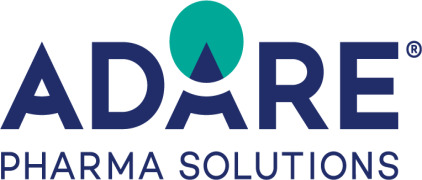Patient-centric medicines the way forward during COVID-19 crisis, say CPHI panel

Festival of Pharma roundtable discusses how drug delivery formulation and development is focused on hospital-to-home care setting
Working patient centricity into drug delivery will not just bring better outcomes for patients but will also help to alleviate strained healthcare systems battling against pandemics such as COVID-19, according to key stakeholders at a recent CPHI Festival of Pharma webinar.
The roundtable session, Patient Centricity – Beyond the Buzzword, sponsored by Adare Pharma Solutions, focused on trends and factors transforming the drug delivery landscape and how and where patient centricity can play a part.
Aurelio Arias, engagement manager, IQVIA, said that in some ways, the concept of patient centricity had potentially helped healthcare systems through the COVID-19 pandemic in that different medicines rather than the plain or cheapest standard of care were being used and they were displaying various benefits.
“We’ve seen the use of subcutaneous medicines over intravenous or using safer products that are easier for patients to administer at home or took the patient away from having to visit the hospital as frequently,” he said, giving the UK example of Abraxane being recommended over paclitaxel and docetaxel and the direct oral anticoagulants over warfarin.
“For me, it was really a key win, showing it’s not simply about having the cheapest medicine out there; you really need to have a broad spectrum of possibilities,” he added.
Asmita Khanolkar, senior director, Cambridge Pharma, SMC, highlighted three main patient centricity trends in the current drug delivery market.
Firstly she said, the transition from hospital to home care was progressing, with the focus on the drug side being how products can be delivered through auto-injectors or variable devices to minimize patient visits, or injected in larger volumes, as well as formulating some of the new biologics and cell and gene therapies into the market.
“On the device side, there’s been an explosion as we move towards more high-pressured systems and trying to bring in new devices to the market,” she said.
The second trend she identified was a convergence of technologies, with the medical industry and pharma industries utilizing information and communication technology such as smart devices, cloud computing and data analytics to be able to monitor chronic diseases.
“It can be monitoring and bringing in all this data through your phone or tablet into a web portal where the physician can be directly looking at the data in real time and monitoring some of the diseases and therapies and preventing any crisis situation in chronic diseases,” she added.
Finally, she identified personalized medicine as an emerging trend: “It’s not about one solution fits all - here we see some of the technology coming into the picture such as additive manufacturing where you can have very customized devices for different patient types or even artificial intelligence to collect and customize patient data through the insights and make the therapy very targeted.”
Surviving cancer patient, Heidi Floyd, executive director at Pink Power Moms, said that while advancements in patient centricity have been extremely positive, “one thing I’ve been alerted to is there are many people out there who still don’t have access to digital enablers. We’re talking about the underserved population, those in desperate financial need who don’t have the ability to get to their doctor, they don’t have high speed internet, or the technology to have access to that.”
She said that in the US, Latino and African American women are diagnosed at higher rates of breast cancer than white women: “That has raised a red flag for me. So, while we’re seeing the positive aspects of this, we’re also seeing the chasm that exists for those who have a desperate need.”
Terry Ernest, Senior Fellow, GlaxoSmithKline, said his company was trying to develop global medicines for diseases that are real in many parts of the world.
“We try to design our technology appropriately, because it may not be appropriate to develop a sophisticated, innovative type of device that actually restricts availability to certain regions of the world. In terms of manufacturing pharmaceuticals, we’re also looking at developing locally facilities that can develop and manufacture medicines where we’re able to meet the cost for the product manufacture much more comfortably in areas where the product is being supplied.”
With the COVID-19 pandemic pushing more patients to use oral formulations of drugs, the panel also discussed the impact this trend might have on certain patient populations.
“I’m sure we all agree adherence to a therapy is the driver for drug efficacy and can be ensured by designing a product that is easy to take and not requiring complex administration procedures that can become even more challenging during COVID times,” said Luigi Boltri, senior director pharmaceutical sciences, Business Support & New Technologies, Adare Pharma Solutions. “We’re talking about acceptability of a product and taste and swallowing play a major role.”

Related News
-
News First offers for pharma from Medicare drug price negotiations
Ten high-cost drugs from various pharma manufacturers are in pricing negotiations in a first-ever for the US Medicare program. President Biden’s administration stated they have responded to the first round of offers. -
News The 2024 Pharma Outsourcing Forecast: strategic partnerships across global landscapes
For the pharmaceutical industry, outsourcing drug development, manufacturing, and research operations to contract organisations is not just a passing trend – increasingly, the partnership between drug sponsor and drug vendor is one of vital impor... -
News Gerresheimer predicts weight-loss drug deals to account for 4% of yearly growth
Dietmar Siemssen, CEO of German primary packaging manufacturer Gerresheimer, states that approximately 4% of the company’s revenue growth each year to come from deals with drugmakers of weight loss and diabetes products, particularly GLP-1 class ... -
News Novel approach to creating sustainable packaging from rice husks
Researchers have created a new approach to the designing of eco-friendly nanofibres extracted from rice husks, addressing the critical need for sustainable packaging materials in food and biopharmaceutical products. -
News Eli Lilly’s Zepbound makes leaps and bounds in weight-loss drug market
In the last week, Eli Lilly has announced their partnership with Amazon.com’s pharmacy unit to deliver prescriptions of Zepbound. Zepbound has also surpassed Novo Nordisk’s Wegovy for the number of prescriptions for the week of March 8.&nbs... -
News Coronary drug-coated medical device receives US FDA approval
Boston Scientific announced the FDA approval of their medical device AGENT Drug-Coated Balloon (DCB) for the indication of coronary in-stent restenosis in coronary artery disease patients. -
News CPHI Online Webinar Series – Innovative Strategies for B2B Pharma Marketeers
On February 20, 2024, CPHI Online hosted a webinar on Innovative Strategies for B2B Pharma Marketeers. Featuring expert speakers from across the pharmaceutical value chain, this webinar delves into how B2B pharma marketeers can create better content to... -
News Generics threat to Merck’s Bridion as Hikma seeks pre-patent expiry approval
Merck has disclosed they received notice from Hikma Pharmaceuticals for seeking a pre-patent expiry US FDA approval for Hikma’s generic version of Merck’s Bridion.
Position your company at the heart of the global Pharma industry with a CPHI Online membership
-
Your products and solutions visible to thousands of visitors within the largest Pharma marketplace
-
Generate high-quality, engaged leads for your business, all year round
-
Promote your business as the industry’s thought-leader by hosting your reports, brochures and videos within your profile
-
Your company’s profile boosted at all participating CPHI events
-
An easy-to-use platform with a detailed dashboard showing your leads and performance
.png)
.png)
.png)
.png)
.png)
.png)
.png)
.png)